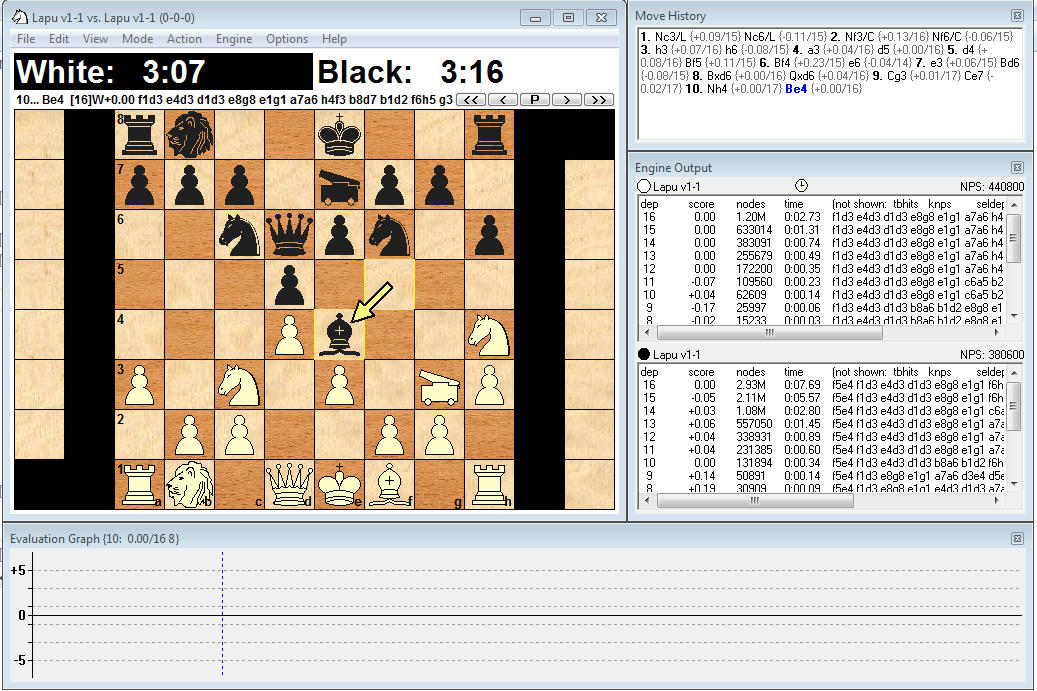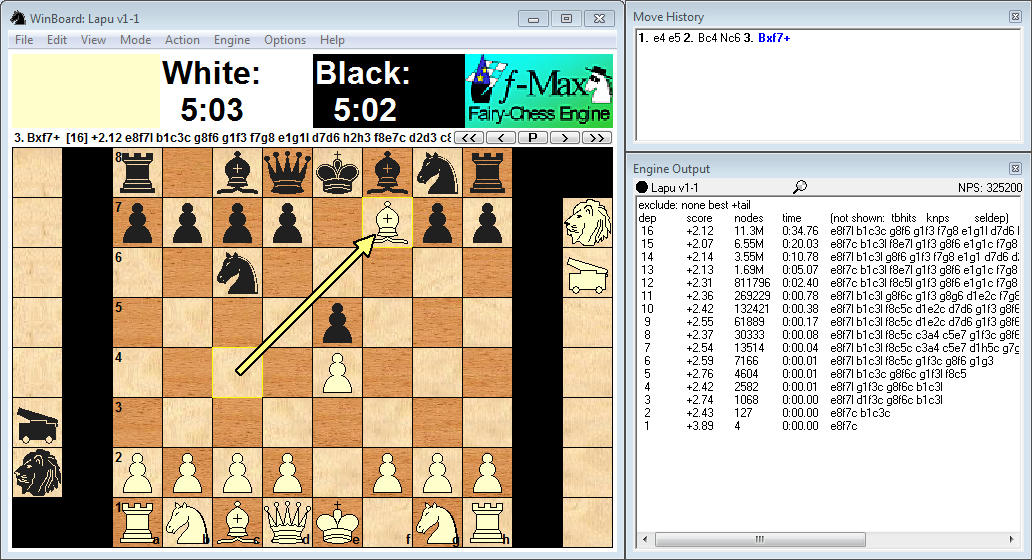musketeerchess wrote:
Gating the new pieces is really very simple.
Simple or not, it's still different from Seirawan, which is going to confuse people who already know that variant. The rules feel like they are different for the sake of being different, which is usually not a good thing...
In case of check rules are very simple also: if the king is checked and cannot either take the checking piece or protect it self and is obliged to move to escape from the check, than it forfeits the right to introduce the new piece.
I don't know if this is very simple: I'm not sure I understand what you're saying. If the king is in check and forced to move, it loses the right to gate a piece (ie, you cannot gate a piece when doing a check evasion), unless the evasion is a capture?
Choosing the initial placement of the new pieces fixes the rules and permits each army to think about a strategy. This also allows the enemy to seek for combinations (including checks or exchanging a virgin piece) sothat it wins an exchange and hampers the opponent from introducing a new piece.
Have you play-tested this?
Not fixing the location where pieces can be gated immediately at the start of the game seems like it enhances the strategy by giving the player more options.
There is a chess variant "knight-in-the-pocket" where you start with an extra knight in-hand, that you can drop on an empty square later. It has a very interesting dynamic, but it feels less cramped than Seirawan, where the requirement to gate the pieces before you develop all your pieces limits you.
I assume that the rules are maybe difficult to program for an engine, but it's the rule.
They're not difficult, per se - but they're too specific for me to implement in SjaakII without modifications to the engine.
In case you don't know - SjaakII is my general variant engine, it can be configured by the user to play a large number of different chess variants, from regular chess to Shogi, Xiangqi, Seirawan or something in between. With Seirawan gating rules it would be able to play this game without modification (with the exception of the Fortress, SjaakII can't handle multi-leg moves). Adding the necessary extra rules for just this variant would be annoying - especially if it slows things down for other variants (SjaakII is already quite slow).
I think the game is beautiful as it is. Giving the new pieces a conventional manner to introduce them on the board respects the global spirit of order in chess. In classic chess there is no room for gambling the rules are clear, the initial placement of the pieces is also clear. Adding two new pieces is already much disturbing that's why i think that the rules as they are stated are the best way to deal with this specific problem.
Well, I disagree, but it's your game.
Adding new pieces is not a radical departure from orthodox chess, it's been done in numerous ways in different variants. Introducing them Seirawan-style doesn't change any of the aspects of the game you mention.
Let me put it this way: I actually find Seirawan gating rules to be rather clunky and cumbersome, this feels more stifling. An issue I have with Seirawan Chess is that the "new" pieces it has are rather strong and not particularly interesting. Some of the ones you included here are, I think, more interesting, so it fixes one issue I have with S-Chess at the cost of complicating another...
I also respect all your comments. This certainly will give plenty of other possibilities for creating derivative variants from musketeer chess.
Imagination imagination, all is about imagination
Sure, and I for one welcome any initiative to get more people interested in chess variants!


